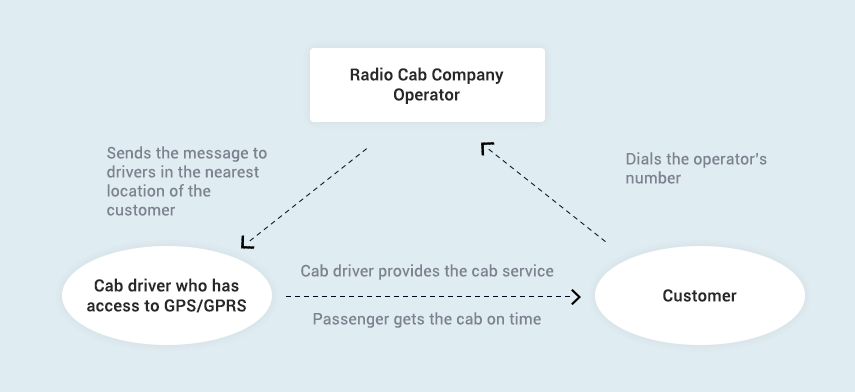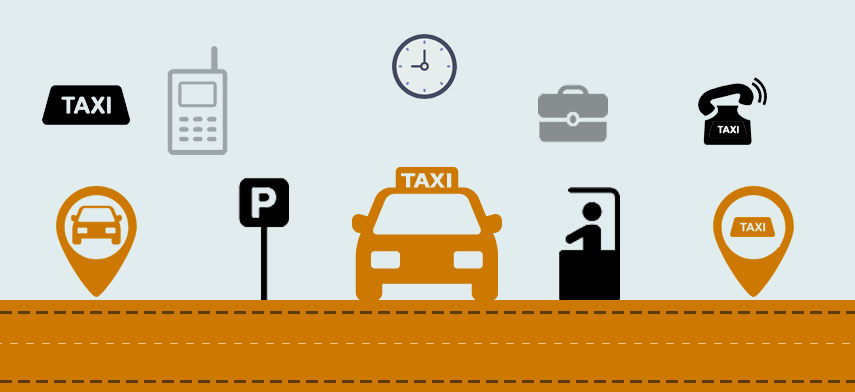The taxi industry has undergone a tremendous change over the past few years. With the introduction of taxi-hailing services like Uber and Lyft, people don’t need to wait for hours to board a taxi or public transport. The way these on-demand taxis are providing us the ease of moving is remarkable.
While we enjoy booking cabs anytime on demand, there’s another player in the transportation industry that is joining the mobile app trend to manage its already established manual dispatch process - Radio Taxis.
Radio taxis were really popular in the 1990s when it brought a new level of comfort and convenience in the public transport industry. People could dial a number and book a cab to the desired location without any hassle. Today, most of the radio taxi services have adopted radio taxi dispatch system and rely on mobile apps for their operation.
In India, the radio cabs made their way during the mid-1990s in various metro cities like Delhi and Mumbai. Different Indian players and international players joined in the business which was ultimately transformed by the likes of Uber and Ola. Various private players joined the radio taxi business, and the industry began to experience high demand and growth. In fact, radio cab service became to be the top growing business in the Indian transportation sector. Various companies such as Easy Cabs, Meru Cabs, Mega Cabs, and others introduced their own fleet of cars and many drivers signed up with the promise of high earnings.
Today the vast majority of the radio cab businesses have adapted themselves to new ways of on-demand economy and use a mobile app to facilitate their operations. In this blog, we will take a look at how radio taxi works and makes money.
What Is a Radio Taxi?
A radio taxi is generally operated by a private company that either owns their own fleet or works on a franchise basis. The cabs work on radio signals which are used to locate a taxi and communicate with the drivers.
How Does a Radio Taxi Solution Operate?

All radio taxis are connected to the base using radio signals. A customer calls the helpline number of the taxi company and gets connected to a representative at the call center.
The passenger notifies the representative about their requirement of a cab and relays the location and time of pickup. The representative in the call center then uses the radio signal to locate the nearby cabs and inform them about the pickup location and time. The radio taxi services use GPS and manual taxi dispatch software to keep track of all vehicles and their real-time locations.
After the representative locates a free cab, the details of the passenger are transferred over radio signals to the driver. The driver then arrives at the pickup location at the specified time.
How Does a Radio Taxi Service Earn Money?
Both the driver and the passenger have to pay some transportation charges to the radio taxi company for availing the service. The company can also earn from advertisements on the taxis and other promotional activities.
The consolidated earnings enable the companies to earn a huge profit even after giving a satisfactory share to the drivers. An Indian radio taxi operator, Meru Cabs, earned revenue of rupees 300 crores with 5,600 vehicles within five years of establishment.
Business Model of Radio Taxi Service

Radio taxis provide their service directly to customers under the B2C model and also cater to corporates and businesses under the B2B model that further use the service for their employees. The radio taxis operate on different business models which they have developed through trial and error method with experience of working in the market.
1 Company Owned Fleet
Some companies own all the cars under their brand. Drivers run the company owned cars and pay a commission. Sometimes, the radio taxi company only pays the driver a fixed fee each month, instead of having a commission-based model.
Drivers can also earn from incentives and bonuses for extra rides and other offers. The radio taxi company bears the maintenance expense and other costs related to the vehicles.
2 Franchise Model
Under the franchise model, drivers own the cars themselves. They look to increase their business, get a brand name and reap other benefits of the tie-up. They also earn a higher income compared to other non-radio taxi drivers by getting access to the customer base of the radio taxi company.
The driver has the responsibility to maintain and repair the car and pay all the related expenses. They also pay a certain fee or charge to the taxi company per day, week or month for using their brand and services. The taxi company doesn’t have any liability of repairing or fixing the vehicles and uses the commission for improving and expanding their service.
3 Attached Vehicle Model
Here the cab drivers, under a radio taxi company, are promised a minimum number of trips each day. In return, they pay a service charge and other fees. The drivers generally have to sign an agreement for a certain period during which they own the vehicle and get business from the company.
Drivers also have to pay a one-time security deposit or payment for getting ownership of the car.
4 Rent a Cab Model
Some radio taxi providers such as Easy Cabs work under this model. A driver with a commercial driving license can hire a vehicle from the company after paying the lump sum amount.
The company collects a daily or weekly charge from the drivers and any earning on top of that goes to them. The drivers have to pay for the fuel of the car, though the cab company bears the maintenance expenses.
The cab driver is free to work for as many hours as they want. There are no restrictions or a minimum requirement of hours by the radio taxi company.
Why Is Radio Taxi a Potential Investment Avenue?

Various factors make radio taxi a favorable investment option. We will explore a few in brief!
1 Huge Growth Potential
The radio taxi and ride-hailing industry worldwide is predicted to grow by 8 times i.e. US $285 billion by 2030. Even the Indian market has been experiencing huge growth in the sector of radio taxis.
The market had a valuation of 14.4 billion rupees in 2011 – 2012 and grew by 30.9% in the next five years. The total number of radio taxis in India is also expected to increase at a CAGR of 25%.
Radio taxi service is a lucrative industry to invest in. You can earn a huge profit as the demand for personalized rides are on the increase.
2 Inadequate Public Transport Services
Many cities and towns other than the metro destinations are still suffering from the lack of adequate public transport. Even in metro cities, people find it hard to get public transport at specific periods. During office hours, for instance, transport like buses and trains get super crowded.
Radio cabs provide a cost-effective and convenient way of traveling for people living in those areas.
3 The Rise of On-Demand Economy
People nowadays want to be served instantly without any delay. We use our smartphones to book tickets, make reservations and make doctor appointments. The same mentality has crept over to the taxi business. It's what is fueling the growth rapidly.
4 Transformed Corporate and Consumer Demand
Radio taxis have made it possible to book a cab without waiting at the end of the street corner. You can just dial a number and a cab will be headed your way. The heightened convenience of calling a cab from your doorstep with added amenities such as AC and modern vehicles increases the demand for radio cabs.
Even corporates are using radio cab services as they turn out to be cost-effective in the long run. Both ways, the business has ensured customers for its profit.
5 Growth in Tourist Numbers
Tourist movements and influx have increased considerably in the past few years. There have been a total of 1.24 billion international tourist arrivals around the world in 2016.
Tourists don’t like to take any chances. They go for options that are comfortable and convenient for them. Calling the helpline of radio taxi services or using their app to book a taxi is easy. The demand among tourists also makes radio taxi a potential investment option.
Challenges Ahead of Radio Taxi Companies and Solutions
In spite of the increased demand and high profitability, there are a few challenges in front of radio taxi businesses. Let’s find their solutions!
1 Precise Location of Pickup
Radio taxis find it difficult to relay the pickup location of the passenger which causes a delay in the trip hampering customer satisfaction.
The solution to this is really simple. The whole problem can be avoided using GPS which is an essential feature of radio taxi apps and solutions. Using the GPS location of the customer’s mobile phone, the driver can navigate to the pickup point easily following GPS directions.
2 The Need of Holistic Solution
Unless you are living under a rock, you already know how to book a cab with Uber or Ola. Such amenities like estimated pickup time, the location of the driver and estimated fares are not available to radio taxi companies traditionally.
The answer to this problem lies in radio taxi app development. You can get yourself a customized radio taxi app with all features like Ola or Uber to offer your customers a rich and satisfactory experience.
Conclusion
The success of your radio taxi business depends on a reliable and high-quality radio taxi solution or a mobile app. Your customers can book their cabs using the app and get estimated pickup time and an estimated fare. Your drivers can also locate the customer on their GPS map and use the app to accept or decline requests.
Transform your radio taxi business and make it profitable by getting your own mobile taxi app solution.
Author's Bio

